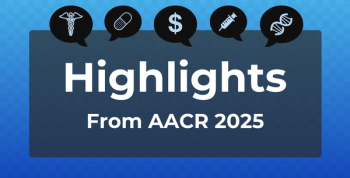
Review Highlights Advances in SCD Treatment, Potential Targets for Novel Agents
The review discusses hydroxyurea and 3 additional drugs approved by the FDA—L-glutamine, crizanlizumab, and voxelotor—as well as agents currently being investigated to treat sickle cell disease (SCD).
Drug development for
SCD, an autosomal recessive inherited blood disorder, is characterized by the production of hemoglobin S (HbS), an abnormal hemoglobin that polymerizes under deoxygenated conditions and facilitates the formation of red blood cells (RBCs) resembling a sickle shape. The clinical symptoms include vaso-occlusion, ischemia, anemia, vascular dysfunction, and organ damage. Hydroxyurea, which increases fetal hemoglobin (HbF) production, was the only disease-modifying agent until recently, when drugs targeting different pathophysiological properties began to emerge.
The review, an article in press accepted for publication in Transfusion and Apheresis Science, discusses hydroxyurea and 3 additional drugs approved by the FDA—L-glutamine, crizanlizumab, and voxelotor—as well as agents currently being investigated to treat SCD.
Hydroxyurea was approved by the FDA in 1998 and was approved for pediatric patients in 2017. It has long been a standby that has been shown to decrease mortality, pain, hospitalizations, and instances of acute chest syndrome in patients across age groups. It is administered orally once daily and has minimal toxicity, but ensuring patient adherence to treatment and clinical follow-up is often challenging.
Oral L-glutamine was FDA approved for all SCD patients aged 5 and above in 2017 after a phase 3 trial found it to reduce pain crises and hospitalizations in patients with SCD versus a placebo. This supported prior research suggesting L-glutamine minimized the number of SCD pain crises. The mechanism of action is not entirely understood, but research has shown it to increase NADH levels in sickle RBCs, which might reduce oxidative stress and therefore reduce pain related to SCD.
Crizanlizumab, a human monoclonal antibody, inhibits the adhesion molecule P-selectin to thwart the pathophysiological process that causes vasoocclusion. Crizanlizumab received Orphan Drug Designation from the FDA in 2008 and was approved for SCD patients 16 years of age or older in 2019 based on a successful phase 2 trial. It has been shown to reduce pain crises in patients with SCD, including those receiving concomitant hydroxyurea.
Voxelotor works by binding to the N-terminal valine of the alpha chain of hemoglobin, which causes a conformational change in hemoglobin that increases its affinity for oxygen as well as delaying HbS polymerization. It was granted Orphan Drug Designation by the FDA in 2015 and was approved for patients 12 years of age and older in 2019 based on results from a randomized phase 3 trial and for patients 4 years of age and older in 2021 based on positive findings in a phase 2a trial in children ages 4-11 years. Voxelotor produced a statistically significant hemoglobin response versus a placebo and improved hemolysis markers in the study.
There are numerous agents being investigated for the treatment of SCD, and they target various mechanisms of action. Cellular adhesion inhibition, reducing inflammation and oxidant stress, modulating platelet activation and coagulation abnormalities, and targeting nitric oxide signaling pathways are all potential approaches. Overall, the review emphasizes the potential in targeting different pathways to treat SCD.
“While advancements in curative therapies through stem cell transplantation and gene therapy are promising, pharmacological agents will remain a more viable option to the majority of the affected population, particularly in economically disadvantaged countries,” the authors concluded.“Future use of multi-agent therapy employing drugs with different mechanisms have been proposed.”
Reference
Lee MT, Ogu UO. Sickle cell disease in the new era: Advances in drug treatment. TransfusApher Sci. Published online August 29, 2022. doi:10.1016/j.transci.2022.103555
Newsletter
Stay ahead of policy, cost, and value—subscribe to AJMC for expert insights at the intersection of clinical care and health economics.









































